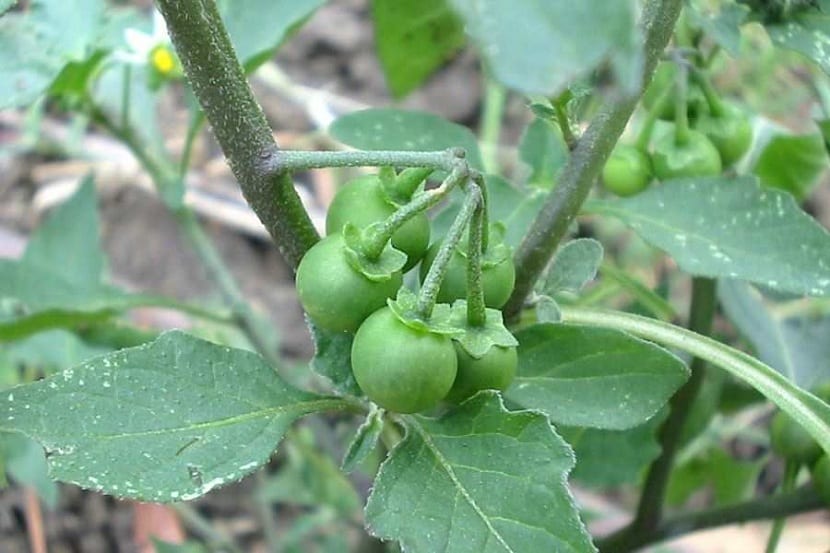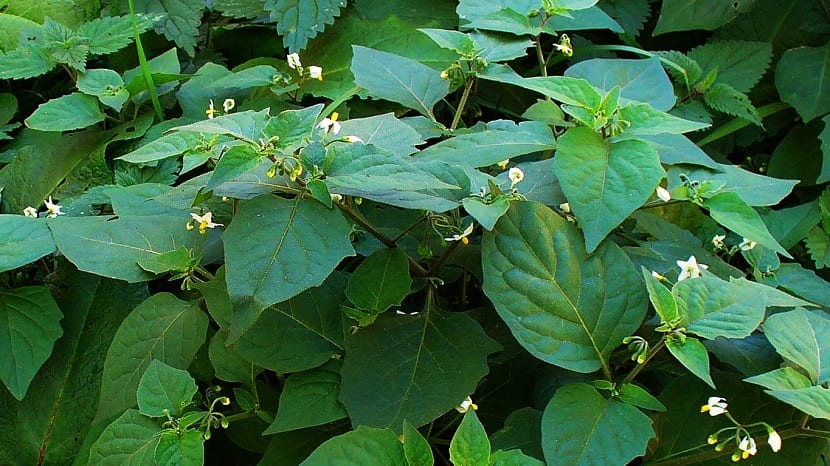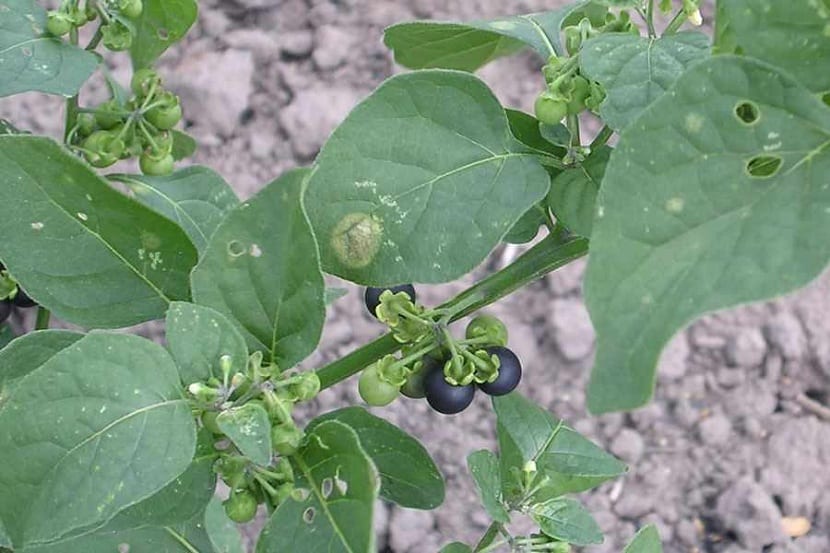
Today we are going to talk about a fairly discreet plant but with a moderately acceptable beauty. It is about nightshade. Its scientific name is Solanum nigrum and it is quite a peculiar species with a lot of history behind it. It is a toxic plant, so you have to be careful with some aspects of it. As is often the case with these types of plants, what is toxic also serves as a natural medicine. Therefore, this plant has been used as a natural remedy for some things.
In this article we are going to explain to you what are the characteristics of the Solanum nigrum and tell you everything you need to know about its medicinal properties.
Key features

It is a plant that does not usually attract much attention. They are normally forming bushes with a deep green color. It has small white flowers with yellow hearts. It does not need very demanding conditions to grow, so it tends to develop among the rest of the flora quite easily. It is capable of covering fertile fields when the mornings are humid in the winter. As we have mentioned before, it is a toxic plant, but it has been known to make good use of it as a natural medicine.
The names by which it is usually known are black nightshade, morella vella and morella negra. Tomato borda is the name most often given to them on the islands. It does not belong to the tomato family. It has a bell-shaped calyx and 5 sepals on which there is a white, star-shaped corolla. In the center we can see yellow anthers of the 5 stamens. The stigma is green. It shares a family with the potato and, therefore, the plant shares some similarities with it.
When they are more developed, the flowers turn into a kind of dark berries. They are not very large. However, they are toxic. It's like they give toxic black peas. There are numerous cases of poisoning by ingesting this species of pea and by confusing them with them. Some of the authors who have studied this plant speak of possible hallucinogenic effects. That with too high doses it can even cause death.
Uses and toxicity

This plant has various medicinal uses. For example, if we receive a blow and we have a sore area, we can apply a handful of moistened leaves on the painful area to calm the pain. It also works for arthritis. If used externally, the liquid resulting from the decoction for 10 minutes can be used for various treatments. Skin diseases are the most used since it is quite effective with eczema. It is also used to treat some ulcers and cracks caused by dry skin.
Because it is highly toxic, it is advised to handle with care. For nothing in the world should you take homemade preparations that are made with this herb. Cases such as the one mentioned above of confusion with peas were recorded in certain older writings. However, more currently, no cases of poisoning have been reported thanks to the knowledge about this plant.
The use of Solanum nigrum he has been more reserved to make preparations in external treatment. These preparations have to be done by a qualified staff to be able to administer the necessary amounts and not overdo it. Otherwise we could get intoxicated. The difficulty of applying these natural remedies lies in the fact that the most effective dose is, in turn, one of the doses closest to the dose in which it is toxic. Therefore, it is important that someone with knowledge and, if possible, experience, is the one to make the preparations.
The stems and leaves have saponosides, sterols, solanine and citric acid. Some of these components serve to attract ants. It is not known with certainty if for them it is toxic or not, but of course, they would not go for something that kills them. One of the most important therapeutic effects is analgesic. It is applied externally, such as by means of poultices.
Properties of the Solanum nigrum

It is a highly toxic plant if taken raw. Therefore, as we have mentioned above, it is useful and quite enough to boil it first. This is done because the degree of toxicity decreases as it boils. The black pea-like berries are the most poisonous part. It is considered a weed in many lawns and gardens. In order to treat it, it is convenient to wear gloves. Gardeners must protect themselves from it if they want to uproot it.
In none of the cases should the Solanum nigrum pregnant women. Even if the dose is close to the toxic dose and, for the mother, it is not, it can easily cause a miscarriage. It is important to identify if you are pregnant, even for weeks or a few months (where it is not usually noticeable) before using nightshade as a medicine. Nor should it be administered to the mother when the baby is breastfeeding or it could be toxic and lead to death.
For the treatment of certain diseases such as those mentioned above, it is better to go to herbal treatments where they use plants without toxicity or where you can have better control of the doses. It is important to keep all of these aspects in mind when discussing Nightshade.
Another of the properties, although it seems that they are not real, is as an edible plant. In some countries like Greece, it is considered an edible plant. Since its leaves are not poisonous, but its vines, they are used for eating. These leaves must be cooked for more than an hour to eliminate toxic residues and they are very nutritious vegetables to add to many dishes.
To be able to consume them, the leaves should be collected in summer when the plant has fully flowered and allowed to dry in a clean, dry container. Once the leaves are dry, they can be cooked for more than an hour to be able to consume.
I hope that with this information you can know more about the Solanum nigrum and its medicinal properties.